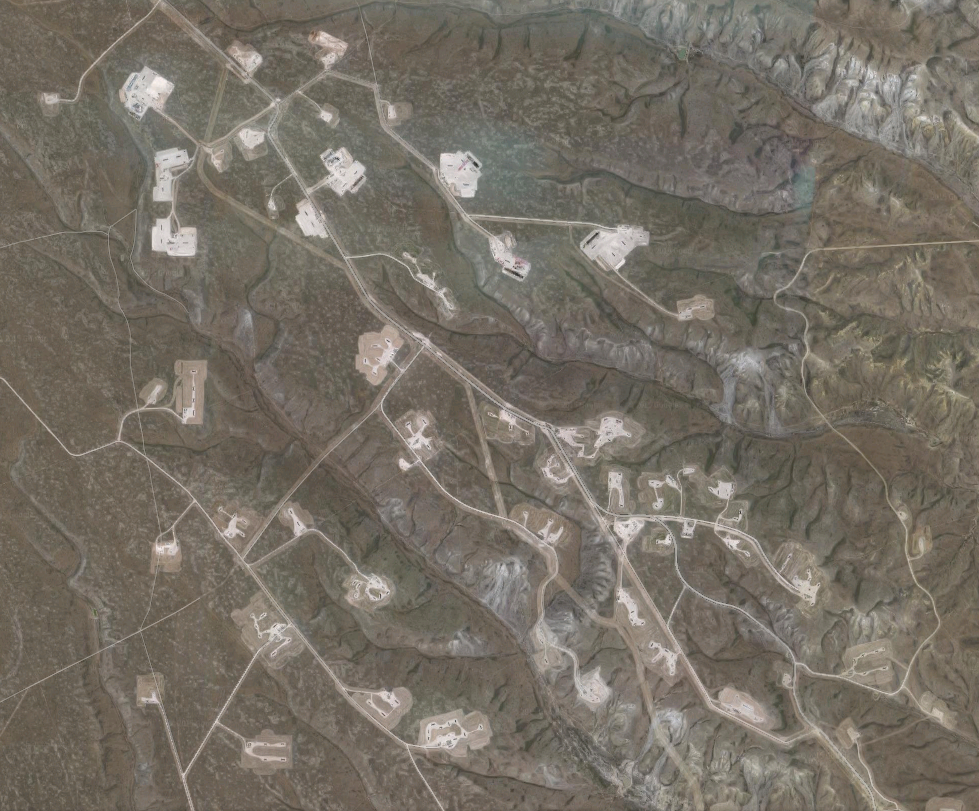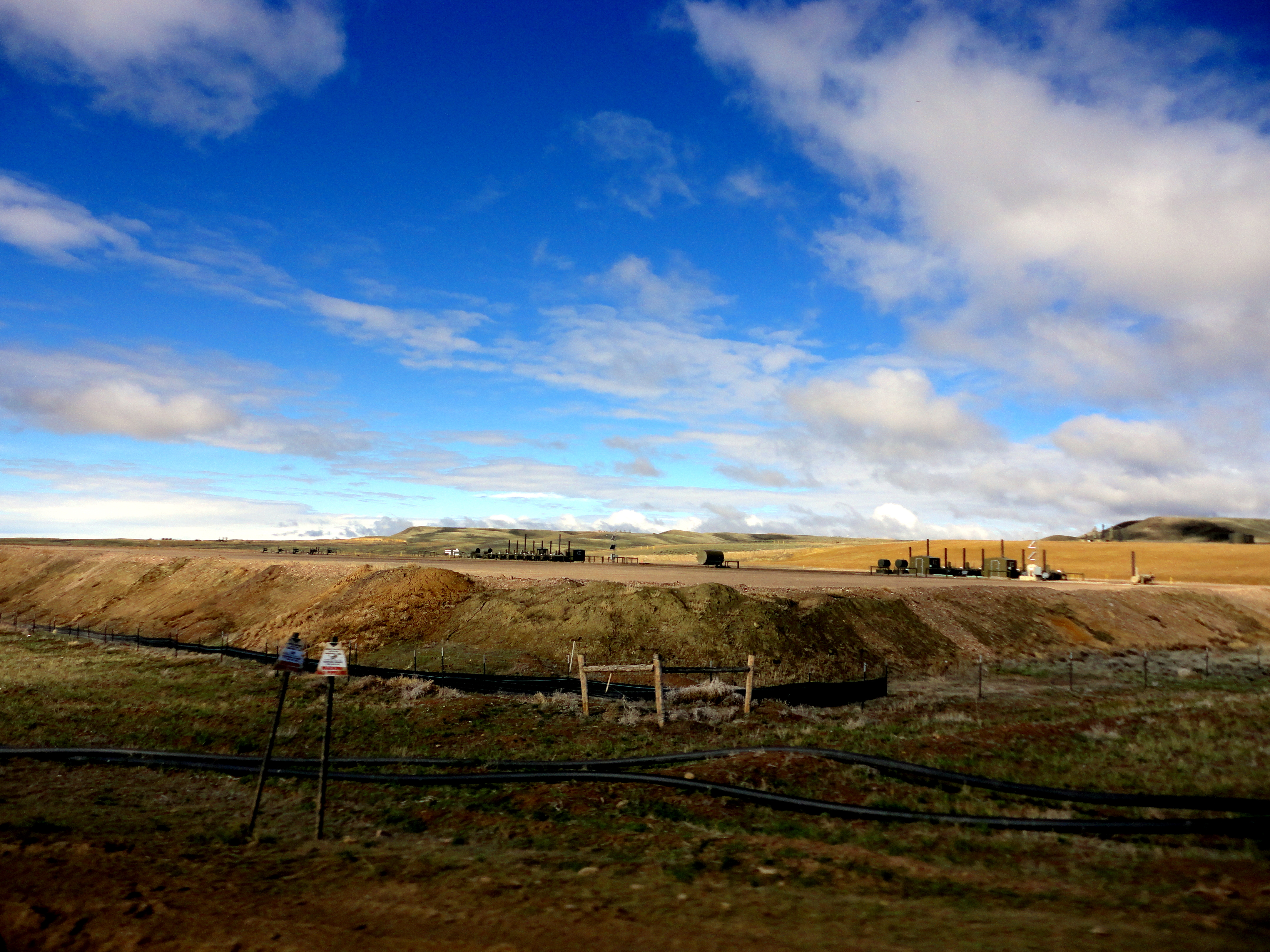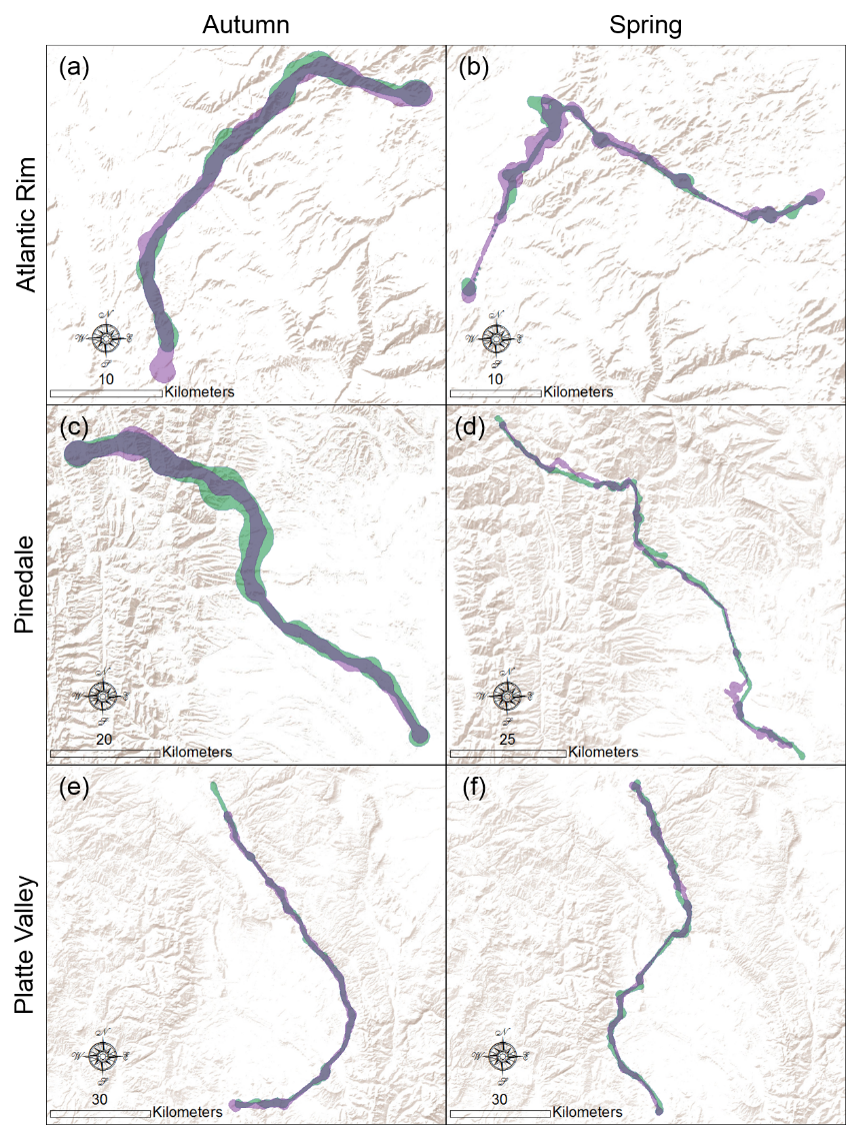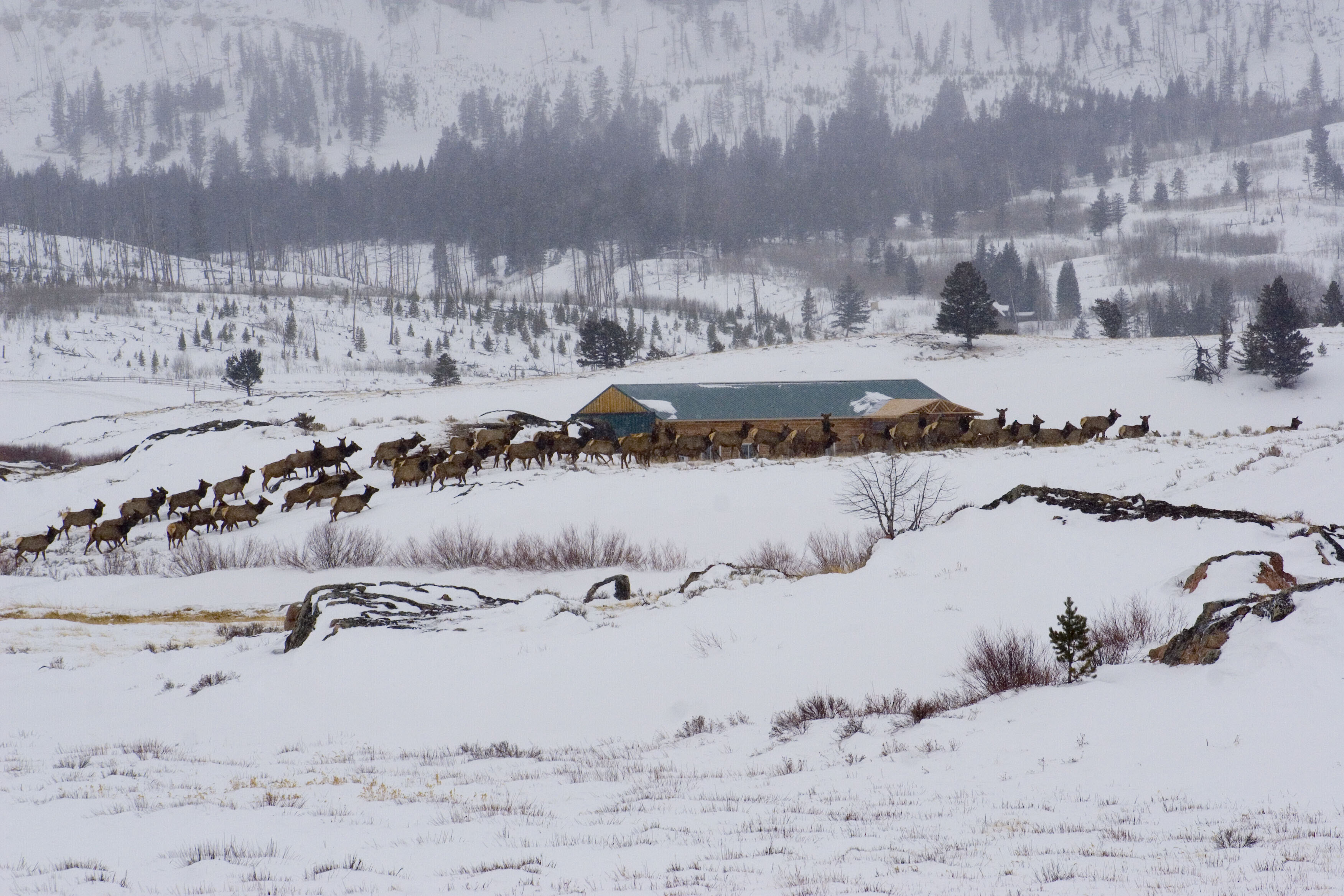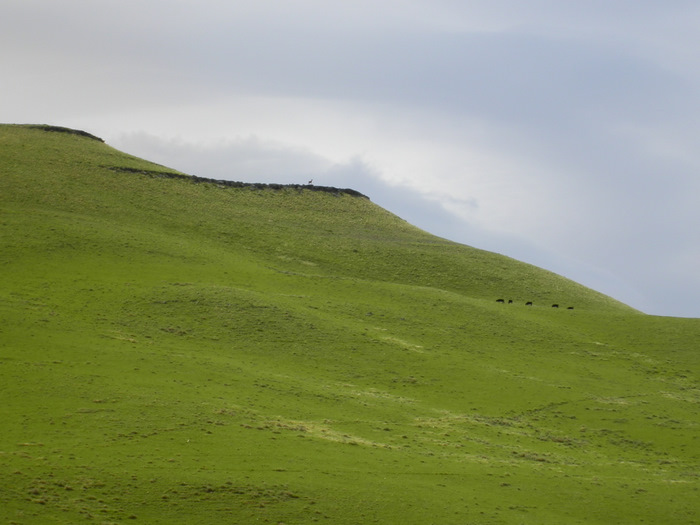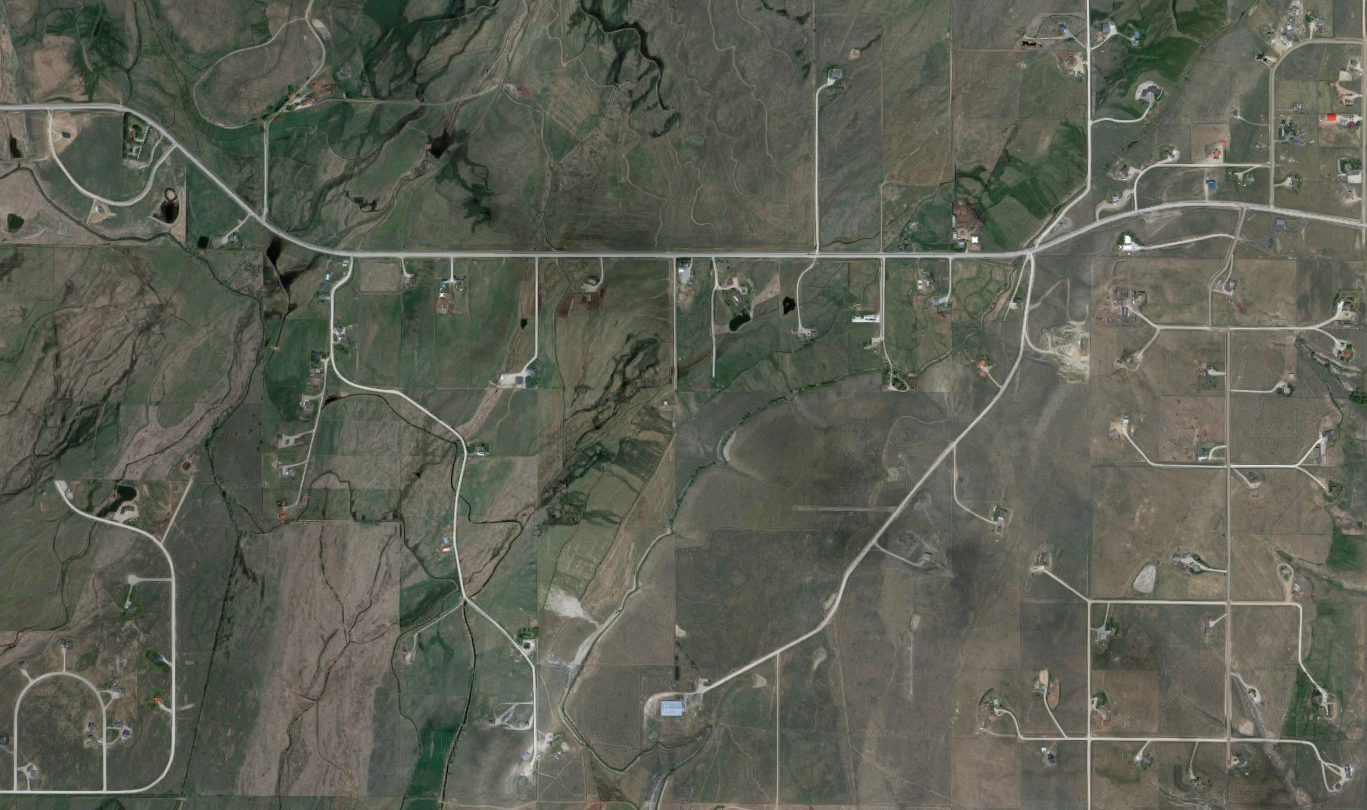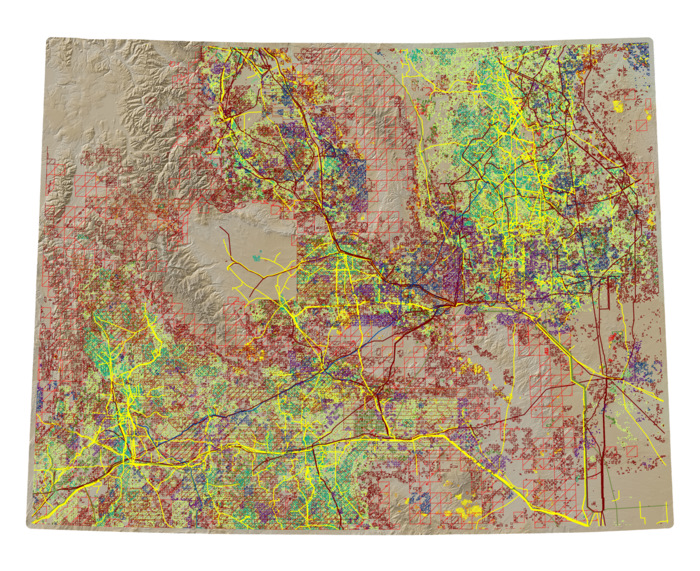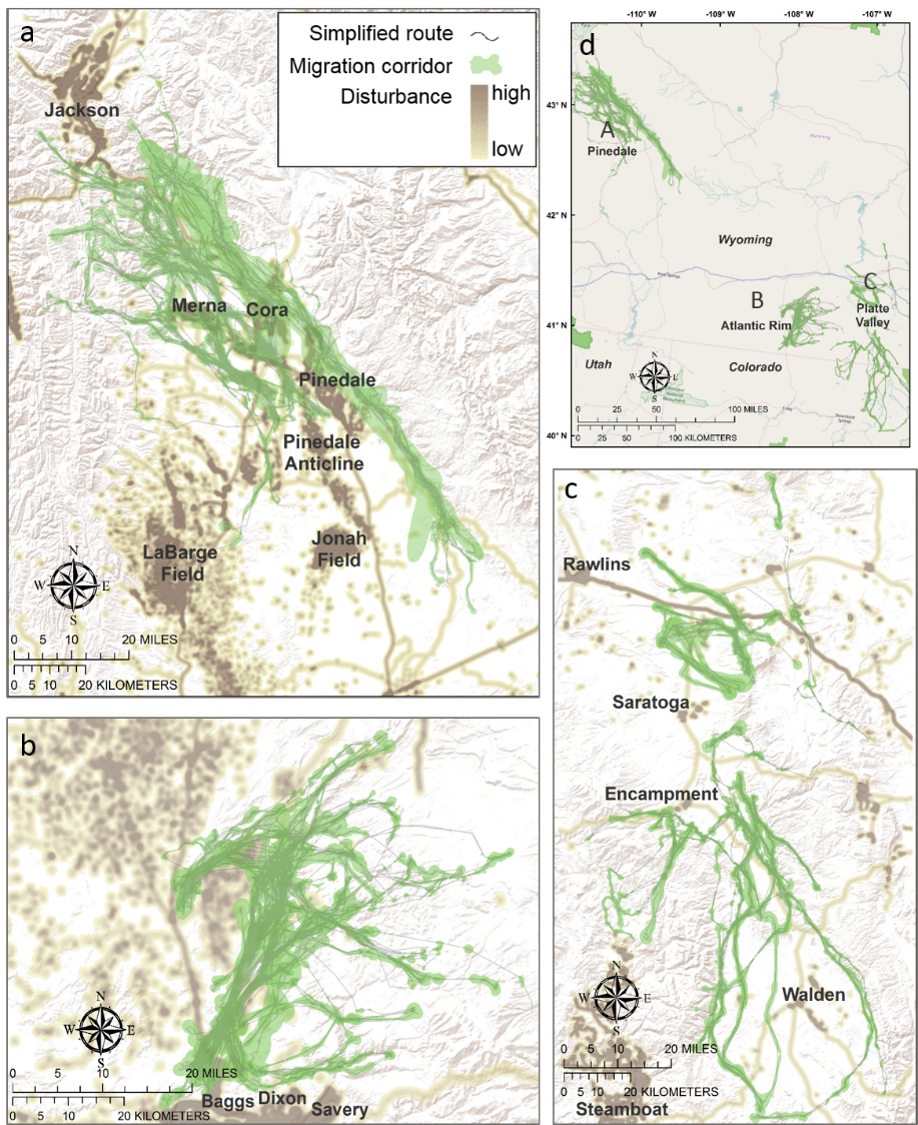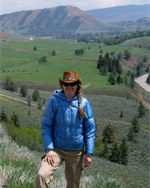We are evaluating the influence of development type and intensity on migratory behavior of several western Wyoming mule deer (Odocoileus hemionus) populations using GPS collar data. These migration routes span a gradient of development, from intact habitat to housing infrastructure to landscapes developed for petroleum extraction. Migration in ungulates is an adaptive behavioral strategy to gain access to high quality forage and mediate effects of deep snow in winter. Because animals come off of winter range in an energy deficit, access to high quality spring forage is a critical part of a migratory ungulates annual energy budget. This study asks the questions, how do increasing levels of development influence migratory mule deer behavior? And, does development intensity impede the ability of migratory mule deer to track phenology? This project is expanding our understanding of impacts beyond the simple loss or retention of migration routes. Migratory mule deer populations have already incurred impacts from human disturbance and will continue to be influenced by development in Wyoming. It is important to understand the effect to migratory mule deer populations in order to implement effective practices for species management and conservation.
Our work indicates that deer modify behaviors – including stopping over less, shifting areas, and speeding up – in developed portions of routes. Deer retained fidelity to movement corridors but not stopover areas. Such alterations can reduce the functionality of migration routes, with negative effects on the long-term persistence of routes in developed landscapes.
Gallery
Evaluating the influence of development on mule deer migrations project: Wyoming is rich in natural resources, and is thus home to a variety of anthropogenic landscape impacts, including energy development.
Evaluating the influence of development on mule deer migrations project: Wyoming is rich in natural resources, and is thus home to a variety of anthropogenic landscape impacts, including energy development.
Evaluating the influence of development on mule deer migrations project: Energy development influences the integrity of landscapes and their connectivity, including roads, pipelines, well pads, traffic, and associated infrastructure and noise.
Evaluating the influence of development on mule deer migrations project: Energy development influences the integrity of landscapes and their connectivity, including roads, pipelines, well pads, traffic, and associated infrastructure and noise.
Examples of high fidelity to migration routes for migratory mule deer (Odocoileus hemionus) in the Atlantic Rim (a, b), Pinedale (c, d) and Platte Valley (e, f) study areas in with individual example of autumn and spring overlap, southwestern Wyoming, USA
Examples of high fidelity to migration routes for migratory mule deer (Odocoileus hemionus) in the Atlantic Rim (a, b), Pinedale (c, d) and Platte Valley (e, f) study areas in with individual example of autumn and spring overlap, southwestern Wyoming, USA.
Evaluating the influence of development on mule deer migrations project: The interaction between wildlife and human presence is ubiquitous in Wyoming and the west.
Evaluating the influence of development on mule deer migrations project: The interaction between wildlife and human presence is ubiquitous in Wyoming and the west.
Evaluating the influence of development on mule deer migrations project: Landscape integrity is an important factor in key habitat and supporting wildlife movement through migration corridor areas.
Evaluating the influence of development on mule deer migrations project: Landscape integrity is an important factor in key habitat and supporting wildlife movement through migration corridor areas.
Evaluating the influence of development on mule deer migrations project: Rural development in Western Wyoming provides an example of habitat fragmentation that alters mule deer use of migration route habitat.
Rural development in Western Wyoming provides an example of habitat fragmentation that alters mule deer use of migration route habitat.
Evaluating the influence of development on mule deer migrations project: Mineral leasing and development leaves a significant portion of the state with development or the potential for development, highlighting the need for planning to support wildlife mi
Mineral leasing and development leaves a significant portion of the state with development or the potential for development, highlighting the need for planning to support wildlife migration corridors.
Maps include migration lines, corridors, and the underlying disturbance model in (a) Pinedale, (b) Atlantic Rim, and (c) Platte Valley, and (d) the study areas in relation to each other, with neighboring states for reference.
Maps include migration lines, corridors, and the underlying disturbance model in (a) Pinedale, (b) Atlantic Rim, and (c) Platte Valley, and (d) the study areas in relation to each other, with neighboring states for reference.
Reports & Publications
Sawyer, H., M. J. Kauffman, A. D. Middleton, T. A. Morrison, R. M. Nielson, & T. B. Wyckoff. 2013. A framework for understanding semi-permeable barrier effects on migratory ungulates. Journal of Applied Ecology, Article first published online: 5 DEC 2012. DOI: 10.1111/1365-2664.12013. View PDF
Annual Report 2013
Contact
Teal Wyckoff, M.S. student
Dept. 3166 Wyoming Cooperative & Wildlife Research Unit
1000 E. University Avenue
Laramie, WY 82071
[email protected]
WyGISC Office: (307) 766-2213
Project Lead
Teal Wyckoff was an M.Sc. student in the Cooperative Fish and Wildlife Unit and Department of Zoology and Physiology at the University of Wyoming, completing her degree in 2017. Prior to starting her research in 2011, Teal received a bachelor’s degree with a dual major in Physical Geography and Environment and Natural Resources from the University of Wyoming’s Department of Geography, and the Haub School of Environment and Natural Resources.
Timeline
This project began in 2011. Anticipated completion: 2016.
Funding & Partners
Wyoming Wildlife: The Foundation
Wyoming Game and Fish Department
University of Wyoming School of Energy Resources



